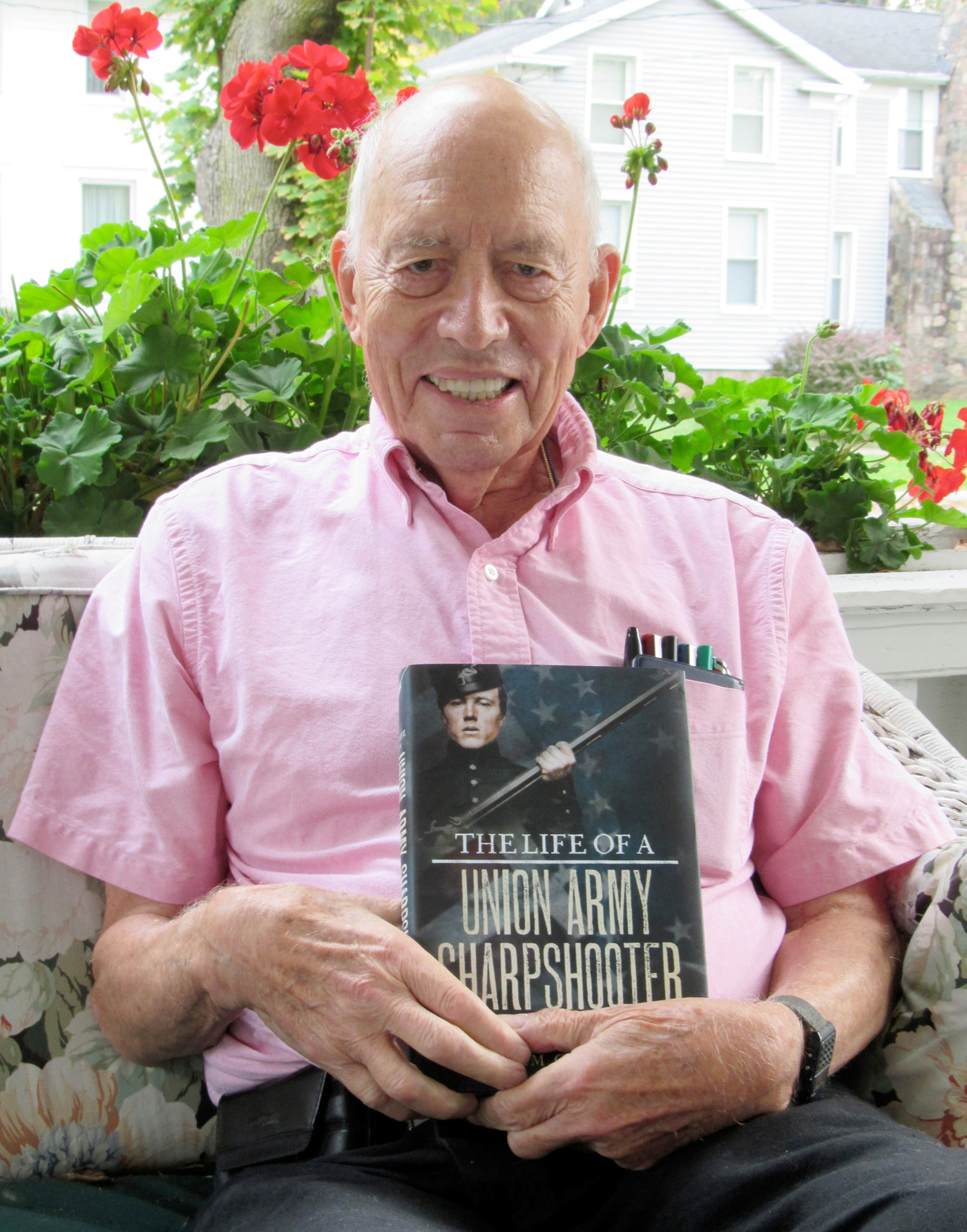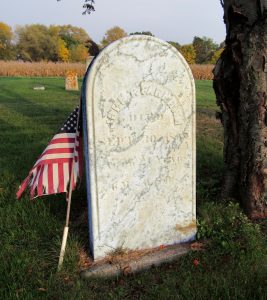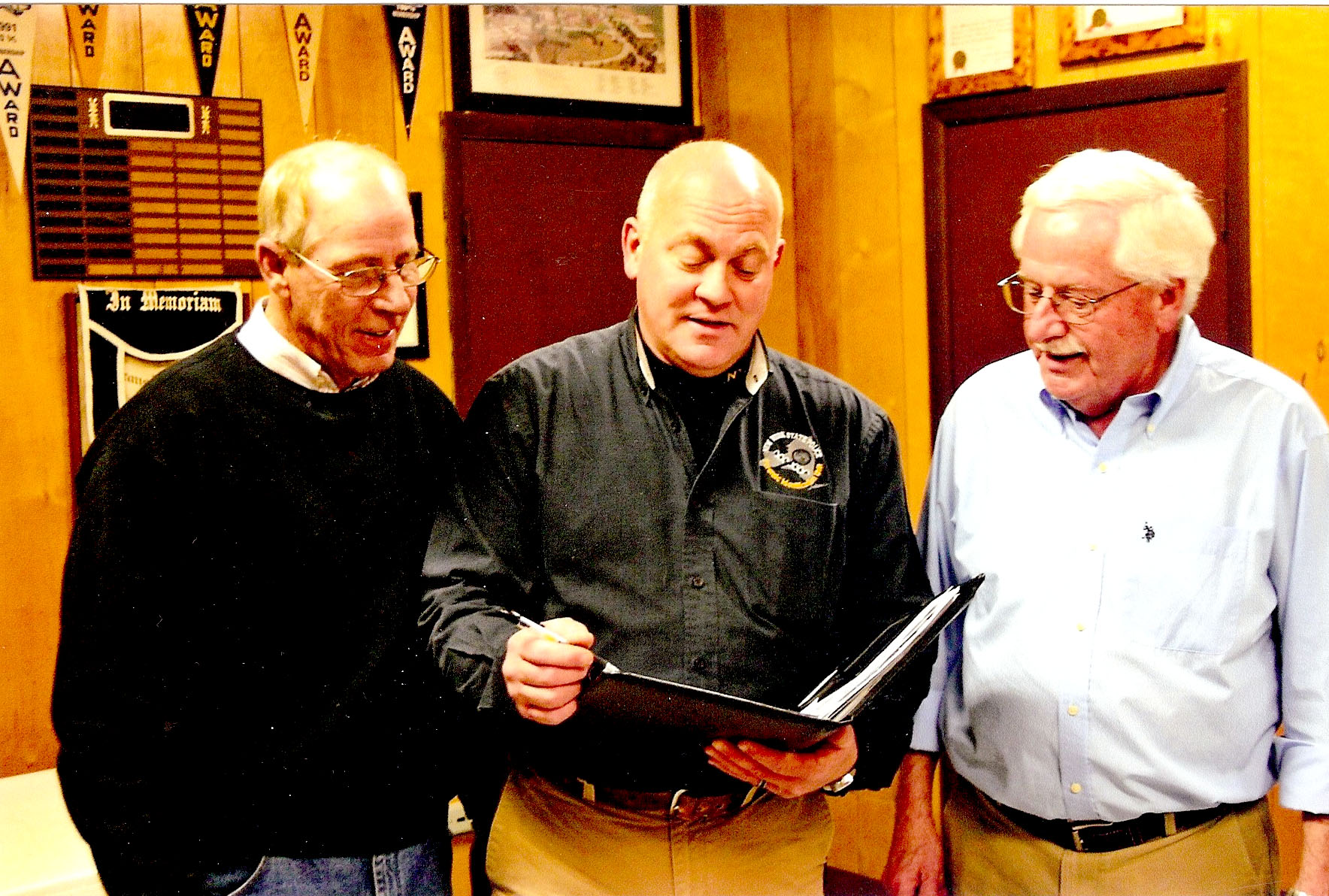Andrews’ latest book details life of a Civil War Sharpshooter

It took patience, perseverance, travel and a little good fortune, but the latest book by Brockport’s Bill Andrews – The Life of a Union Army Sharpshooter: The Diaries and Letters of John T. Farnham – includes transcriptions of Farnham’s six diaries, detailing his three years in the Union Army during the Civil War and life in Brockport before and after the war, as well as additional writings by Farnham including his extensive letters.
Prior to his military service, Farnham lived in Brockport and worked as shop foreman at the Brockport Republic newspaper. He resided in a house just down the street from where Andrews now lives, at the corner of College and Utica Streets.
Andrews explains that because the book contains Farnham’s first-hand accounts of his military experience during the Civil War, it not only chronicles eyewitness experiences of historical events, but is also, “a psychological study – an in-depth portrait of this young man who was very interesting and very active.”
Farnham enlisted in 1862 at the age of 20 and served in the 1st New York Sharpshooters. In addition to the battlefield, Farnham spent time in military hospitals, as a clerk at the headquarters of the Iron Brigade and at the War Department in Washington, D.C.
Andrews said he first came upon Farnham’s letters while he was researching his book on early Brockport, which covered local history through 1865. The letters were among nearly 200 written by Brockport soldiers, which had been printed in the Brockport Republic. When Andrews returned to the letters to begin working on the book, they did not, “work out the way I thought they would,” he explains.
He began Googling Farnham’s name and discovered the existence of five diaries written by Farnham which are part of the collection at the Wichita State University library. A sixth diary had sold at auction for $23,900. Andrews says the value of the diary reflected the fact it was sold along with a blood-stained cuff from the clothes Abraham Lincoln was wearing when he was assassinated. Farnham, a Lincoln supporter, had acquired the relic through a group in which he was involved which had connections to Lincoln.
Andrews traveled to Wichita twice to transcribe the five diaries, but trying to find the sixth proved to be a challenge. Through Internet research and published articles including one in the NY Times, Andrews traced the owner of the book, contacting the auction house, the daughter of a man in Topeka, and finally in 2009, after Googling the diary again, was able to obtain a copy from a man after the diary was referenced as part of an exhibit at the Herbert Hoover Presidential Library in Iowa marking the bicentennial of Lincoln’s birth.
“The amazing thing is that he wrote every day … lengthy entries,” Andrews says. Over an 850-day period, there are 848 entries written, “after battles, after long marches at night, while he was hospitalized, he never failed to write an entry,” Andrews notes.
The book includes 286 explanatory notes written by Andrews as well as photographs and illustrations.
Farnham was a remarkable young man for many reasons, Andrews explains. He wrote at least 63 long articles for the Brockport Republic, 48 of which survive, and composed at least 490 letters. His assortment of writings detail Civil War training, battles, skirmishes, encampments, furloughs, marches, hospital life and his clerkships at the Iron Brigade headquarters and the War Department.
He was an avid Lincoln supporter and visited the White House to meet the President. His diary entry that day notes that Mrs. Lincoln was with her husband and Farnham found her to be, “quite pretty and in a low cut dress,” Andrews says.
He was very open-minded and befriended freed slaves, taught them to read and write, and built them a school. He campaigned for Lincoln’s re-election and was well-read. Farnham subscribed to multiple newspapers and magazines and read 22 books. He enjoyed attending numerous plays and concerts and names at least 108 friends in his diaries while in the service and 156 more at home. “He was very sociable,” Andrews says.

During his time in the hospital, he was put in charge of the library, ran errands for administrators and even helped to care for other patients.
Although he was a sharpshooter for the Union Army, Andrews says Farnham admittedly was a poor shot, often missing the target during practice.
He struggled with poor health and was small in stature, Andrews notes, at one point weighing only 108 pounds. Farnham couldn’t carry his rifle, meaning other officers were given that job.
Following the war, Farnham came back to Brockport and additionally worked in Elmira and Rochester at various newspapers before succumbing to tuberculosis at the young age of 27 – just four years after his Civil War service. Farnham is buried at the Morton Union Cemetery in Kendall.
“I’m not an expert in Civil War literature,” Andrews says, “but I suspect this book provides a more comprehensive, thorough portrayal of life in the Union Army than published otherwise.”
The Life of a Union Sharpshooter: The Diaries and Letters of John T. Farnham, is published by Casemate Publishers in Havertown, Pennsylvania. It is available locally at the Lift Bridge Book Shop in Brockport.




